0 Introduction
The application of Photovoltaic (PV) technology has become an important source of energy in many countries during the past decades [1-3].The potential use of PV modules to replace conventional energy sources has been a driving force for increased research on PV technologies in recent years [4, 5].Two approaches: experimental and PV mathematical models are mostly used to understand the performance of PV modules under operation [6, 7].The experimental approach investigates the performance of PV modules and the power generated under realistic outdoor conditions for different locations and climatic conditions [8-10].The electrical performance of PV modules under outdoor conditions is greatly influenced by operating conditions such as solar irradiance, wind speed, relative humidity, and ambient temperature [1, 11, 12].However, these ambient parameters are unpredictable, hence creating uncertainty for system designers of PV systems.Furthermore, poor quality of data and the quality of measuring instruments are other limitations for the measurement of the PV systems and realtime predictions [13].
Different PV model approaches and soft computing techniques with a wide range of applications are used to forecast, predict and validate electrical power output.These PV model approaches, mainly direct and indirect methods,are classified into three categories: physical, statistical, and software computing [14, 15].The physical methods use analytical models in nature and are based on meteorological parameters [16].The statistical approaches use historical data for generating electrical parameters of the PV system and thus attempt to minimize the errors [17].In contrast,the soft computing technique carries out various numerical simulations of a given data set[18].Among soft computing techniques used, Artificial Neural Network (ANN) is considered an appropriate technique in predicting and validating the electrical power output of PV modules [19].The technique is inspired by its ability to use unsupervised input variables, train them and thus overcome the limitations of conventional techniques in solving complex problems of non-linear systems, which are difficult to model and analyze[20, 21].
Several studies have attempted to predict the electrical performance of different PV modules using a wide range of ANN algorithms.These algorithms include Levenberg-Marquardt optimization (LM), Bayesian regularization(BR), resilient propagation (RP), scaled conjugate gradient(SCG), Additive Momentum (AM), Self-adaptive learning rate (SLR), and Quasi-Newton (QN).However, the most commonly used and well-established ANN backpropagation algorithms are LM, BR, RP, and SCG [22].
The Bayesian regularization algorithm alone was used to predict the power generated from the PV module [23];the results show that the predicted and measured values had a good correlation.Another study compared the prediction ability of two ANN algorithms, LM and BR, on the poweroutput of the PV module [24].The results obtained indicated that the performance of BR with an RMSE value of 0.0706 was better compared to using the LM algorithm for prediction.Another study aimed at forecasting the photovoltaic power output of monocrystalline PV module by means of ANN and time series analysis [25] using three algorithms observed that weather conditions were found to have a significant impact on the execution and quality of the final power output.
More studies [26-31] have either considered one or two algorithms or considered different prevailing ambient parameters [32-34].It is observed in most of these findings that the algorithms are randomly selected, and also, there is a wide difference with reference to the input layer and output layer of an ANN for comparison and understanding the processing capability of these algorithms.
In this paper, experimental recordings of the ambient parameters and module parameters for a-Si and CIGS PV modules during the winter season in Dodoma are obtained.An ANN approach is used to predict the power output generated by a-Si and CIGS PV using four algorithms most widely used by researchers; LM, BR, RP, and SCG.Performance comparison of each ANN algorithm is understood interims of the predicted value and experimental data of PV module, and finally, performance indices; mean squared error (MSE), root mean squared error (RMSE), the mean absolute percentage error (MAPE), mean absolute bias error (MABE), and coefficient of determination (R2)are used to understand the best algorithm in view of the processing capabilities.
1 Experimental Set-up
The experimental set-up consists of a-Si and CIGS PV module technologies installed on a rooftop building at the University of Dodoma (6.5738° S, 36.2631° E) as indicated in Fig.1(a).
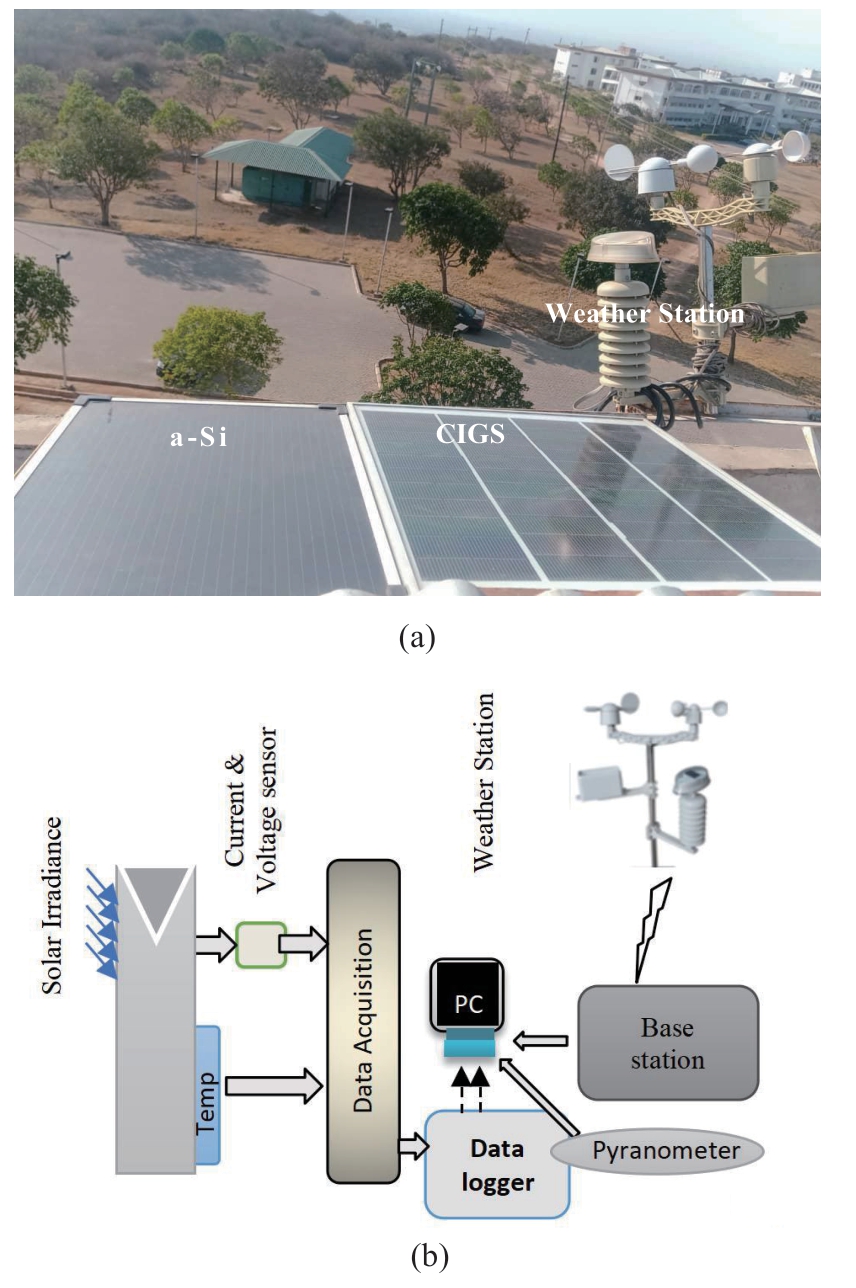
Fig.1 (a) Installed PV Modules (b) Schematic representation of the experimental setup
Specifications of PV module’s under standard test conditions is given in Table 1.
Table 1 Module Specifications and Characteristic Parameters
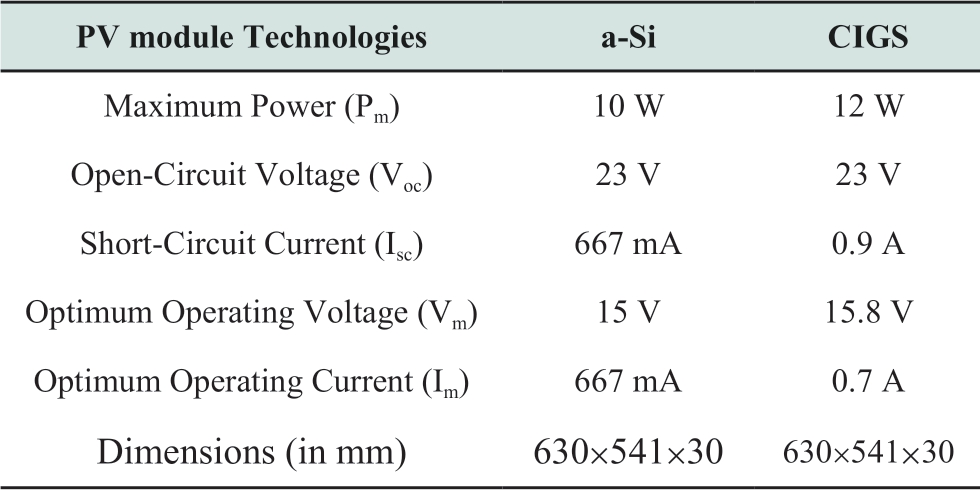
The module parameters measured include PV Surface current, voltage, power output, and module temperature,while weather parameters recorded were ambient temperature, solar irradiance, wind speed, and relative humidity.The data acquisition system for measuring electrical parameters uses a microcontroller interfaced with different sensors.The current and voltage measurements were recorded using the INA219 sensor, while the LM 35 temperature sensor recorded surface module temperature.Solar irradiance was measured by TES 132 Solar Power Meter, whereas ambient parameters were measured using a TP2700WC ProWeather station manufactured by Tycon Power Systems, represented schematically in Fig.1(b).All measurements were recorded at an interval of 1 minute between 7:00 AM to 6:00 PM for a period of three months during the winter season (June to August).
2 ANN Methodology
An autoregressive ANN model was designed and implemented using MATLAB software to predict the power output generated by Photovoltaic modules.A schematic representation of the ANN model is shown in Fig.2.The input parameters are Ambient temperature, Module temperature, Irradiance, Relative humidity, and Wind speed,while the target is Power output.
The vector input x = [Ambient temperature, Module temperature, Irradiance, Relative humidity, Wind speed] is applied to the network’s input layer as shown in Fig.2.
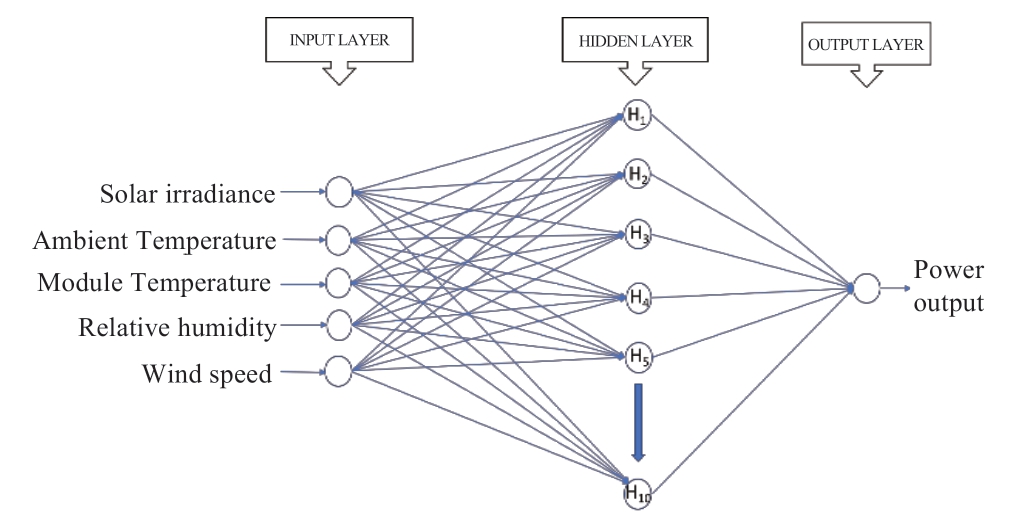
Fig.2 Schematic representation of Artificial Neural Network
The neurons model used is mathematically described as follows:
The net input of the jth hidden layer unit is given by
where, wji is the weight on the connection from ith input neuron to the jth hidden layer neuron and  represents the bias for the hidden layer neuron here, we have considered 10 neurons for the hidden layer.
represents the bias for the hidden layer neuron here, we have considered 10 neurons for the hidden layer.
Thus, the hidden layer neuron output is given by

where, f1(n) is the activation function of the hidden layer neuron, which is tan sigmoidal and is represented by
The neuron input from the hidden layer to the output layer neuron is given by
where wkj is the weight on the connection from the jth hidden layer neuron to the kth output layer neuron and  represents the bias for the output layer neuron, the output layer yk is the network output of interest and is given by
represents the bias for the output layer neuron, the output layer yk is the network output of interest and is given by

where, f 2(n) is the activation function of the output layer neuron which is pure linear and is represented by
Different ANN algorithms were used to predict the power output generated from PV modules.They include LM, BR, RP and SCG.The weight and bias value were set into initial values before the training process.Then, out of 640 samples of data used, 70% was used for training while 15% was used for testing and another 15% used for validation.To determine the ability and performance prediction of each method, five performance indicators:MSE, RMSE, MAPE, MABE and R2 were used [26] and are given by equations (7)-(11)
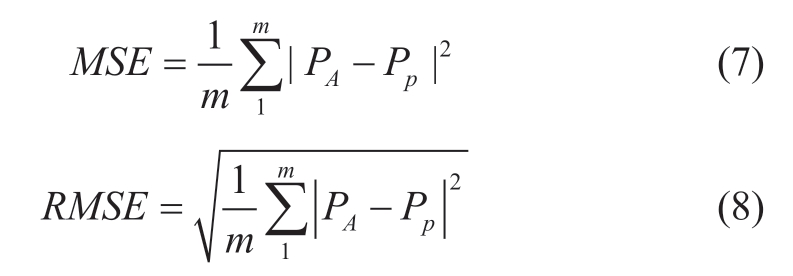
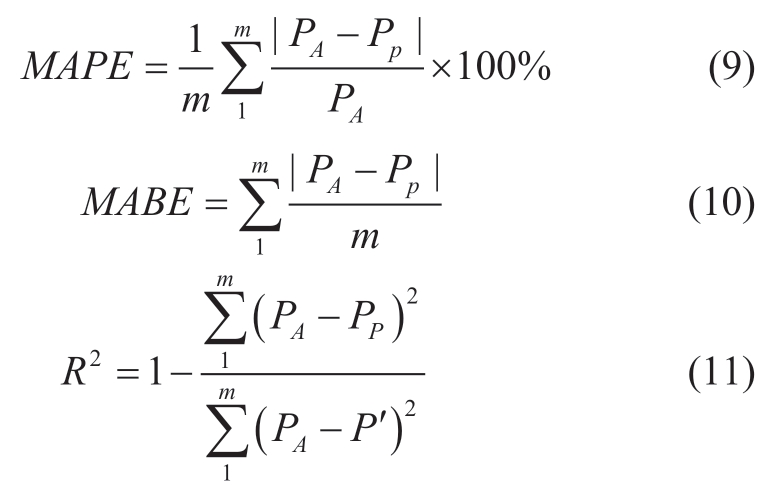
where, PA is the actual measured power, Pp is predicted power output, P′ is the rated power output and m is the total number of observations.
3 Results and discussions
In this section, both experimental and predicted results with ANN model are presented.An average daily profile of ambient parameters and module temperatures recorded for three months under test are presented in Fig.3.
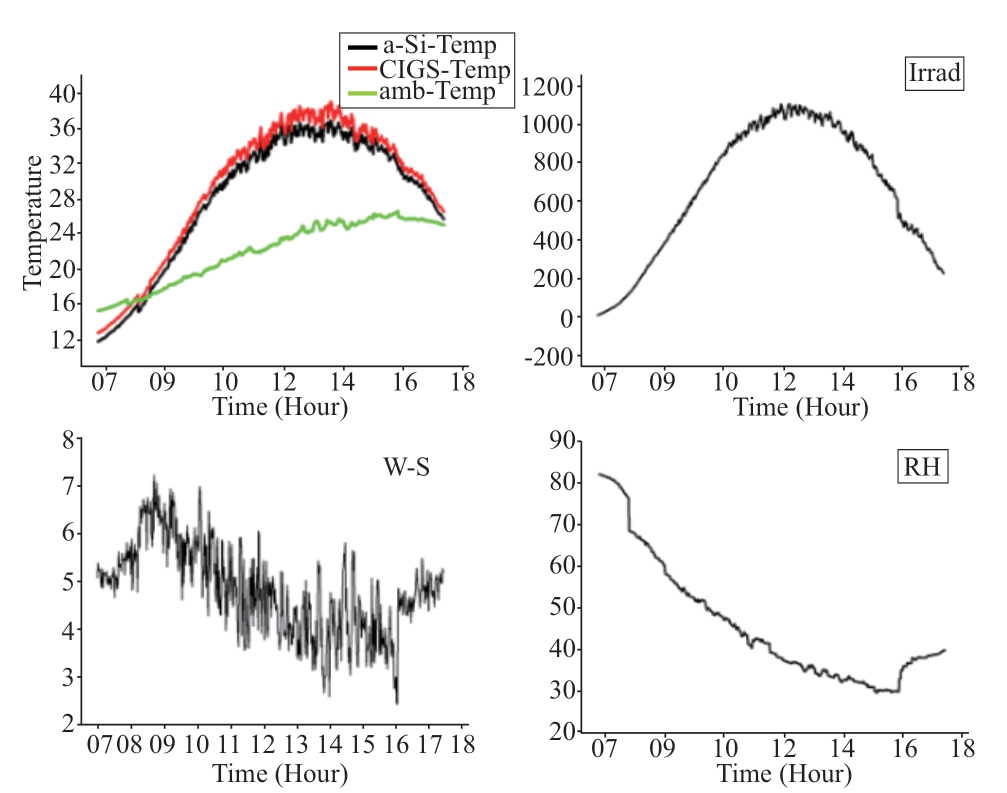
Fig.3 Plots of different operating parameters influencing the performance of PV modules over the time duration of a day
As observed from plots, the evolution of solar irradiance,ambient temperature and module temperature during a day show a similar increment trend from morning to noon and finally decrease towards evening; similar trend between module temperatures with solar irradiance and ambient temperature is attributed to the fact that module temperature varies as a function of solar irradiance and ambient temperature [22].The temperature of both a-Si and CIGS modules stays above the ambient temperature.From Fig.3,it is also found that the CIGS module has a slightly higher module temperature compared to a-Si module temperature.For the case of relative humidity, it is observed from Fig.3 that it was more of the opposite trend as it decreased from morning toward noon and thereafter increasing toward the evening.The average wind speed shows the irregular trend for short interval of time, but the general trend showed a slight increase from morning 7:00 AM to 9:00 AM, then decreasing toward noon and finally increasing toward evening.
The daily average of three-month power output of a-Si and CIGS PV modules recorded during a day is presented in Fig.4.
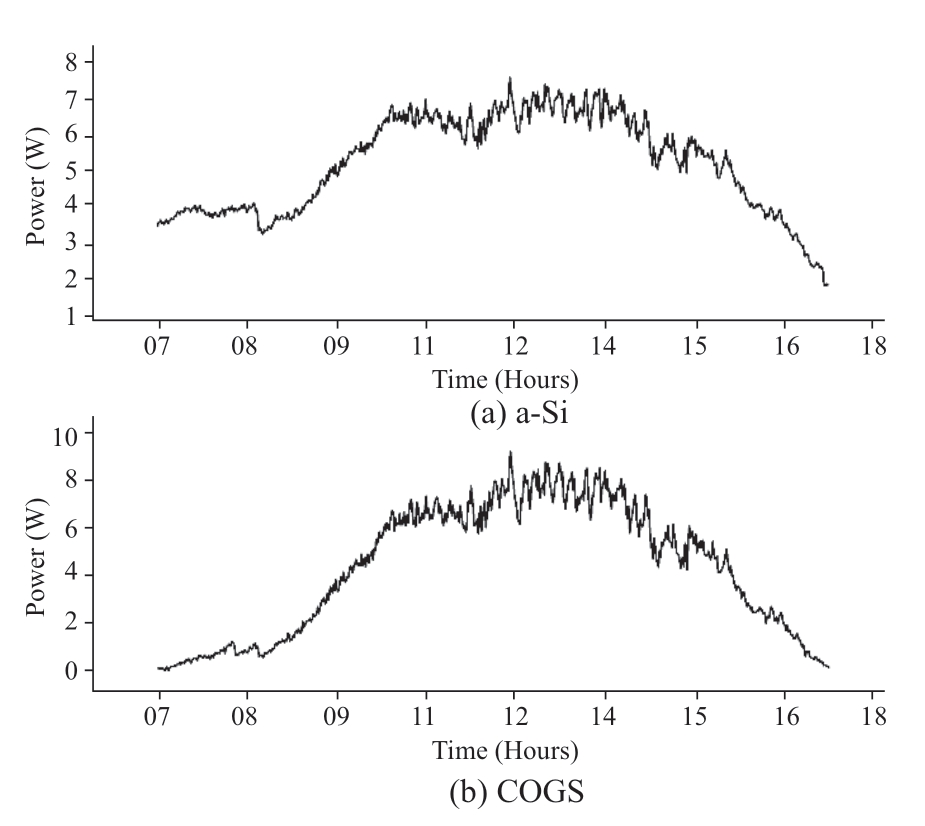
Fig.4 PV modules power (a) a-Si and (b) CIGS over time duration of a day
It is observed that all parameters for both PV modules show a similar increment trend as they were subjected to similar ambient parameters.Furthermore, the peak power output for both PV modules is between 11:30 and 14:30 hours.The power output acquired experimentally from a-Si and CIGS PV modules was then utilized to investigate the prediction ability and performance of four ANN algorithms,which are discussed below.
To understand the four ANN algorithms (LM, BR, RP,and SRB), the constructed ANN model used all ambient parameters and module temperature as input data obtained experimentally under outdoor conditions.In the learning process, the training was repeated several times and for several hidden neurons.Finally, the optimum performance with 10 neurons in the hidden layer was used for prediction.
The comparison between predicted and experimental power output of PV modules is presented in Fig.5 (a-d) and Fig.6 (a-d) for all ANN algorithms.The black line with a square marker represents the experimental results, while a red line with a round marker denotes the predicted results.The predicted power output for both PV modules under consideration appears to agree with actual values for all ANN algorithms used for analysis.As observed from Fig.5 and 6, the predicted values using BR and LM algorithms are closer to actual values than RP and SCG algorithms.
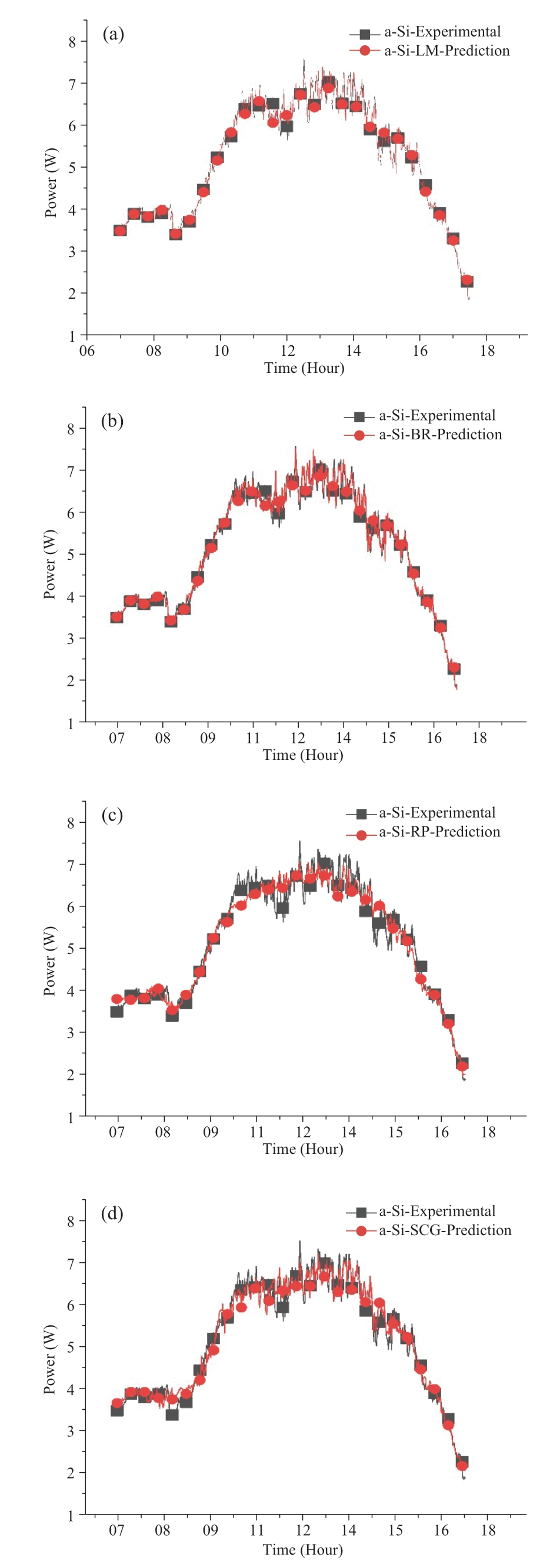
Fig.5 Predicted and measured Power output of a-Si PV module over time duration of a day using (a) LM (b) BR (c)RP (d) SCG algorithms
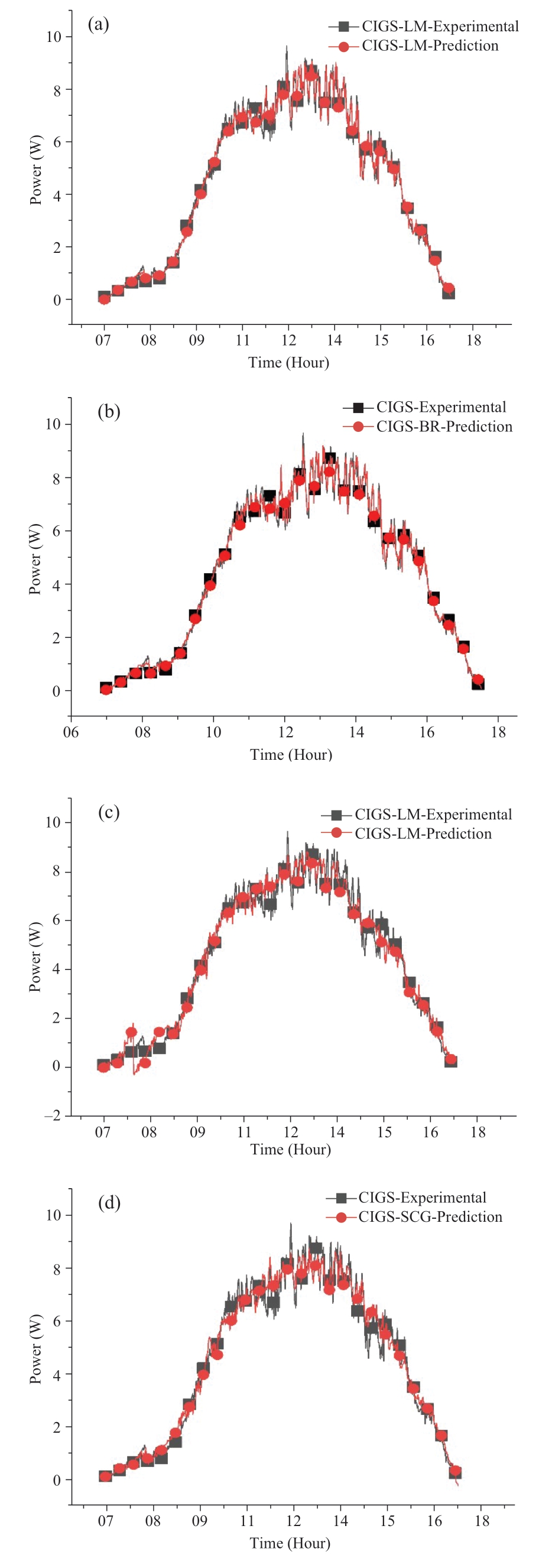
Fig.6 Predicted and measured Power output of CIGS PV module over the time duration of a day using (a) LM(b) BR (c) RP (d) SCG algorithms
The performance of PV modules with different ANN algorithms was determined using performance indicators;MSE, RMSE, MABE, MAPE and R2 computed using equations (7-11) and are indicated in Figs.7-10.These statistical indicators were used to evaluate the prediction ability of each ANN algorithm under consideration.
The best ANN algorithm is selected based on the lowest values of MSE, RMSE, MABE, MAPE and the highest value of R2 [30, 36].Based on the results obtained and presented in Table 2, the MSE values range from 0.0121 to 0.0713 and from 0.0300 to 0.2340 for a-Si and CIGS PV modules, respectively; RMSE values are in the range of 0.1100 to 0.2670 for a-Si PV module and 0.1731 to 0.4838 for CIGS PV module; MABE values were between 0.0809 and 0.1947 for a-Si PV module and between 0.1326 and 0.3739 for the CIGS PV module; in case of MAPE, the value ranges from 1.55% to 3.69% for a-Si and from 5.23%to 19.75% for CIGS module.The R2 showed a good fitting correlation for almost all algorithms.Its values ranged between 0.9633 and 0.9930 for the a-Si PV module and between 0.9706 and 0.9960 for the CIGS PV module, which is higher values than some predicted results in the literature[17, 37].
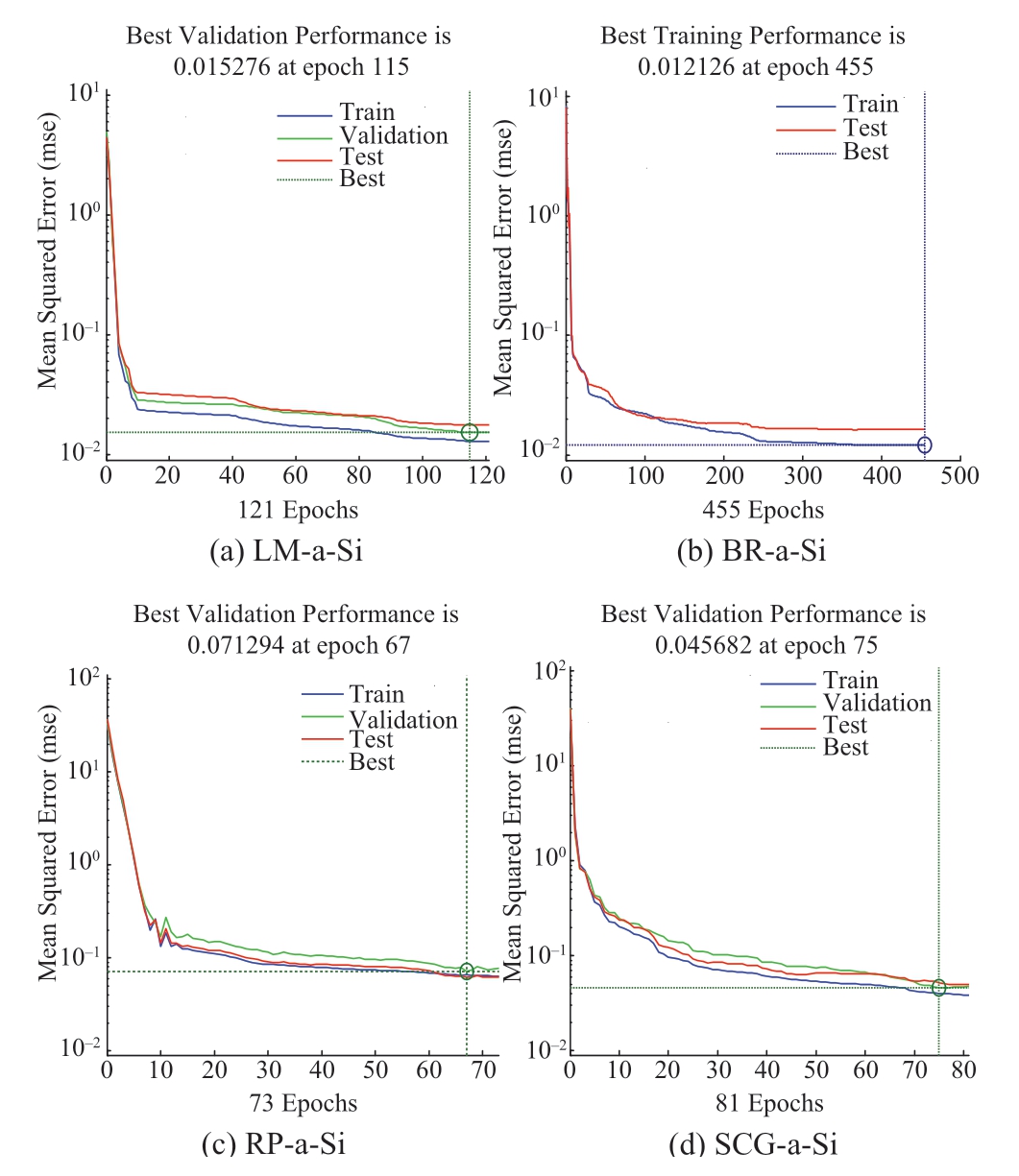
Fig.7 Performance of power output of a-Si PV module with(a) LM (b) BR (c) RP & (d) SCG algorithms
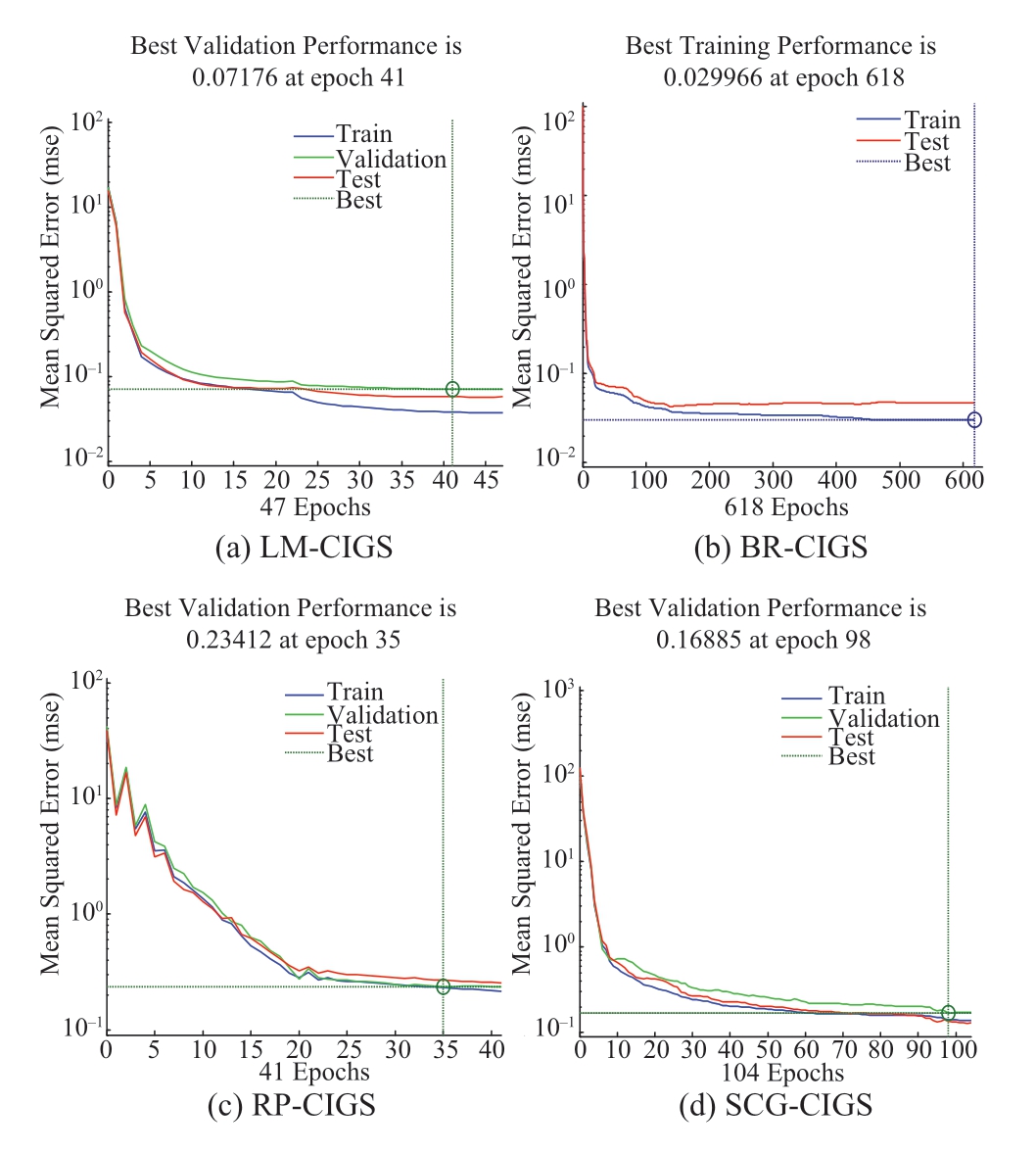
Fig.8 Performance of power output of CIGS PV module with (a) LM (b) BR (c) RP & (d) SCG algorithms
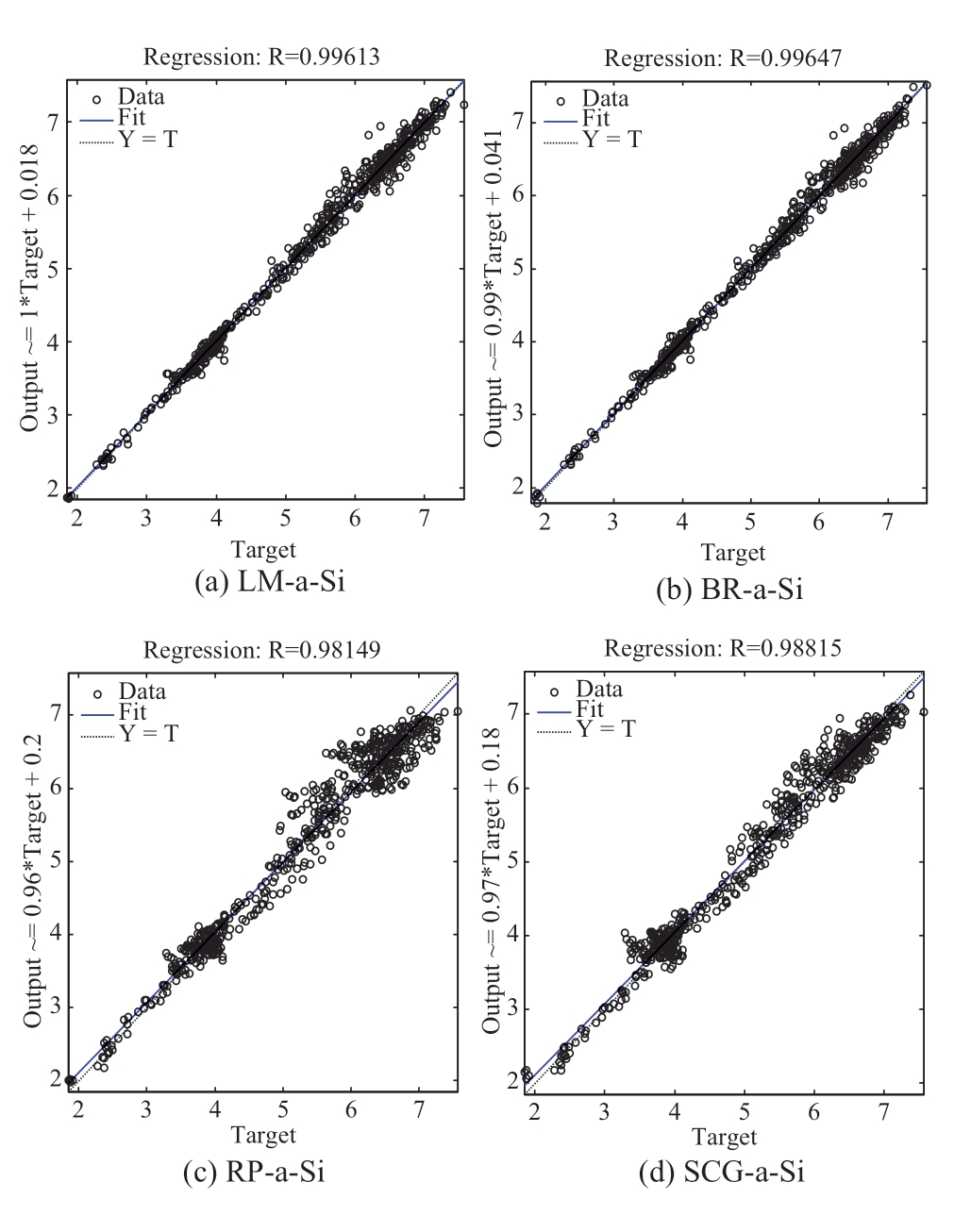
Fig.9 Correlation coefficients for the performance of a-Si PV modules with (a) LM(b) BR (c) RP & (d) SCG algorithms
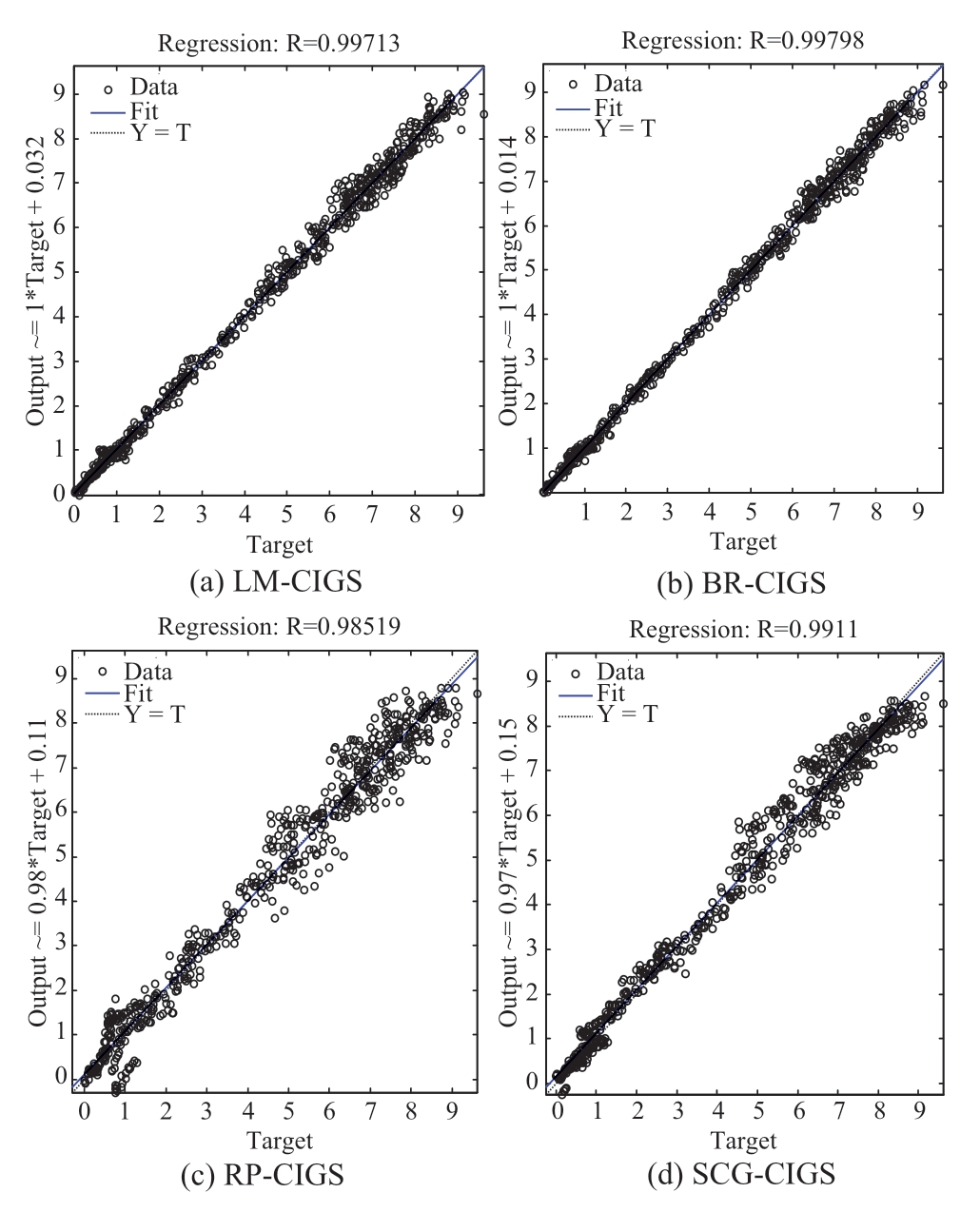
Fig.10 Correlation coefficients for the performance of CIGS PV modules with (a) LM (b) BR (c) RP & (d) SCG algorithms
According to these statistical indicators, as presented in Table 2 and further displayed in Fig.11, the BR algorithm is observed to be the best compared to other algorithms as it had the minimum MSE, RMSE, MABE, MAPE and higher R2 values for both a-Si and CIGS PV modules.This suggests that the BR algorithm performs better in the prediction of the power output compared to the other three algorithms.
Table 2 Performance indices for prediction of Power output
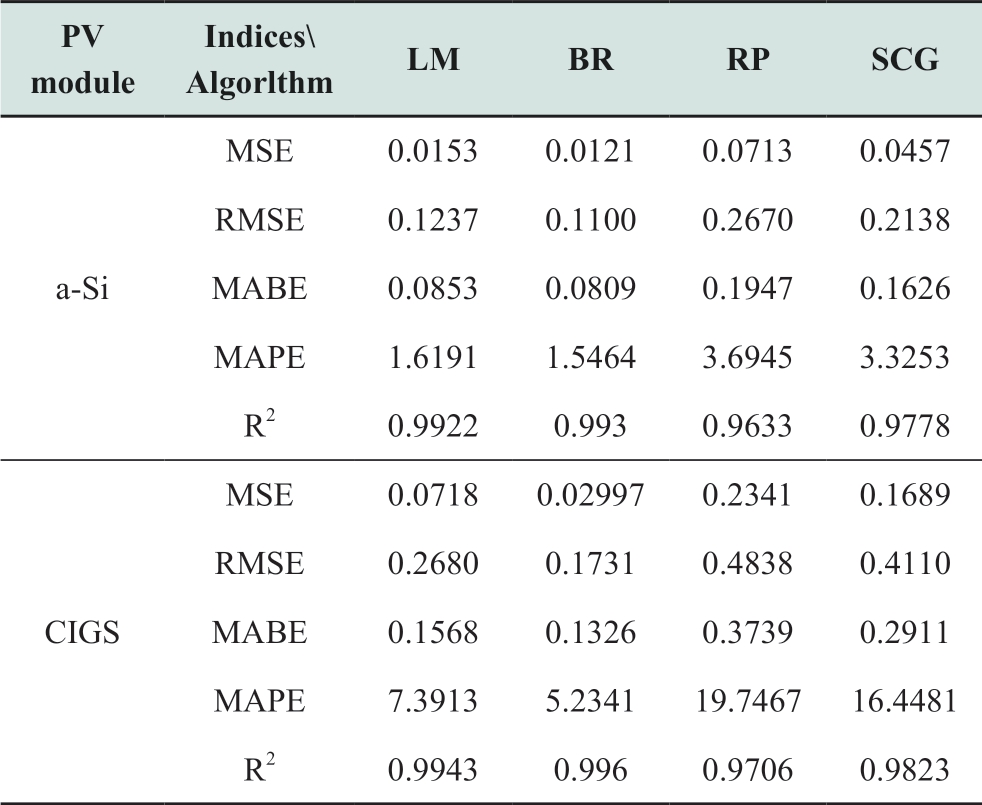
The ANN LM algorithm follows the BR algorithm exhibiting good predictive ability.In contrast, the ANN RP algorithm shows the lowest performance compared to the other algorithms due to higher average MSE and lower correlation coefficient than the other three ANN algorithms as indicated in Fig.11.It is also noted that the performance of any ANN algorithm is associated with epochs.The higher the number of epochs, the better the performance of the ANN model.
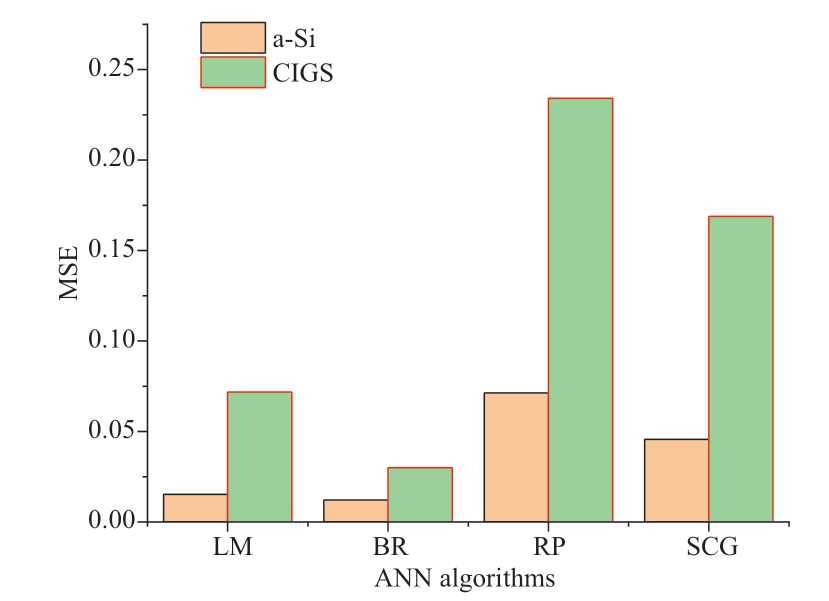
Fig.11 MSE bar plot for comparison of various ANN algorithms
The error histograms of MSE for the training, validation and testing sets are shown in Figs.12-13.The entire range of residuals was separated into 20 bins.The MSE values closest to zero were the most for all ANN algorithms.
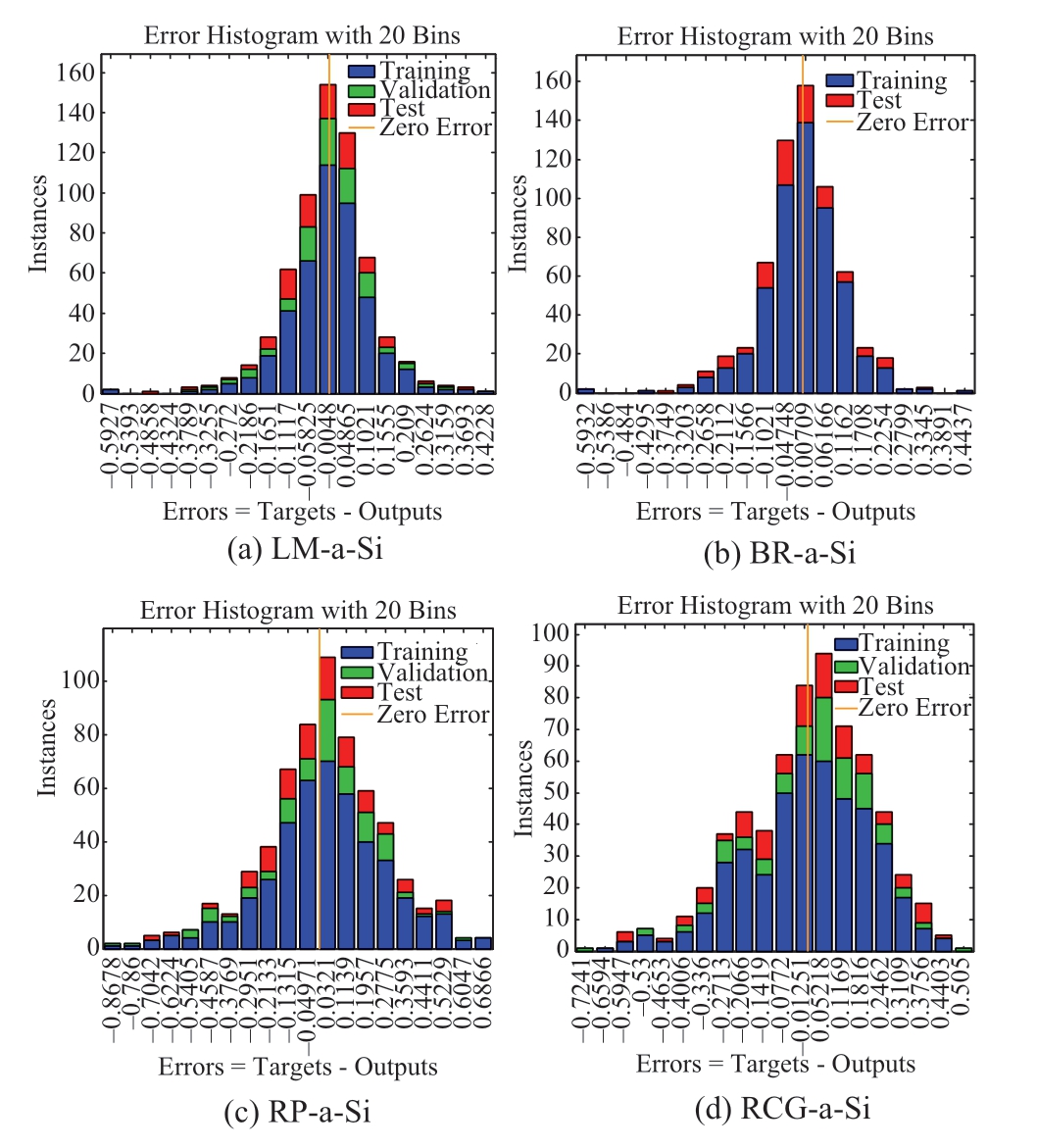
Fig.12 Error histogram of 20 Bins for a-Si PV module
The histogram shapes for all PV modules concerning their algorithms are comparable to that of a normal distribution curve, thus indicating the neural network’s quality.Further observed from plots that the BR algorithm shape was the best followed by the LM algorithm.The training set is the source of the majority of MSE errors.
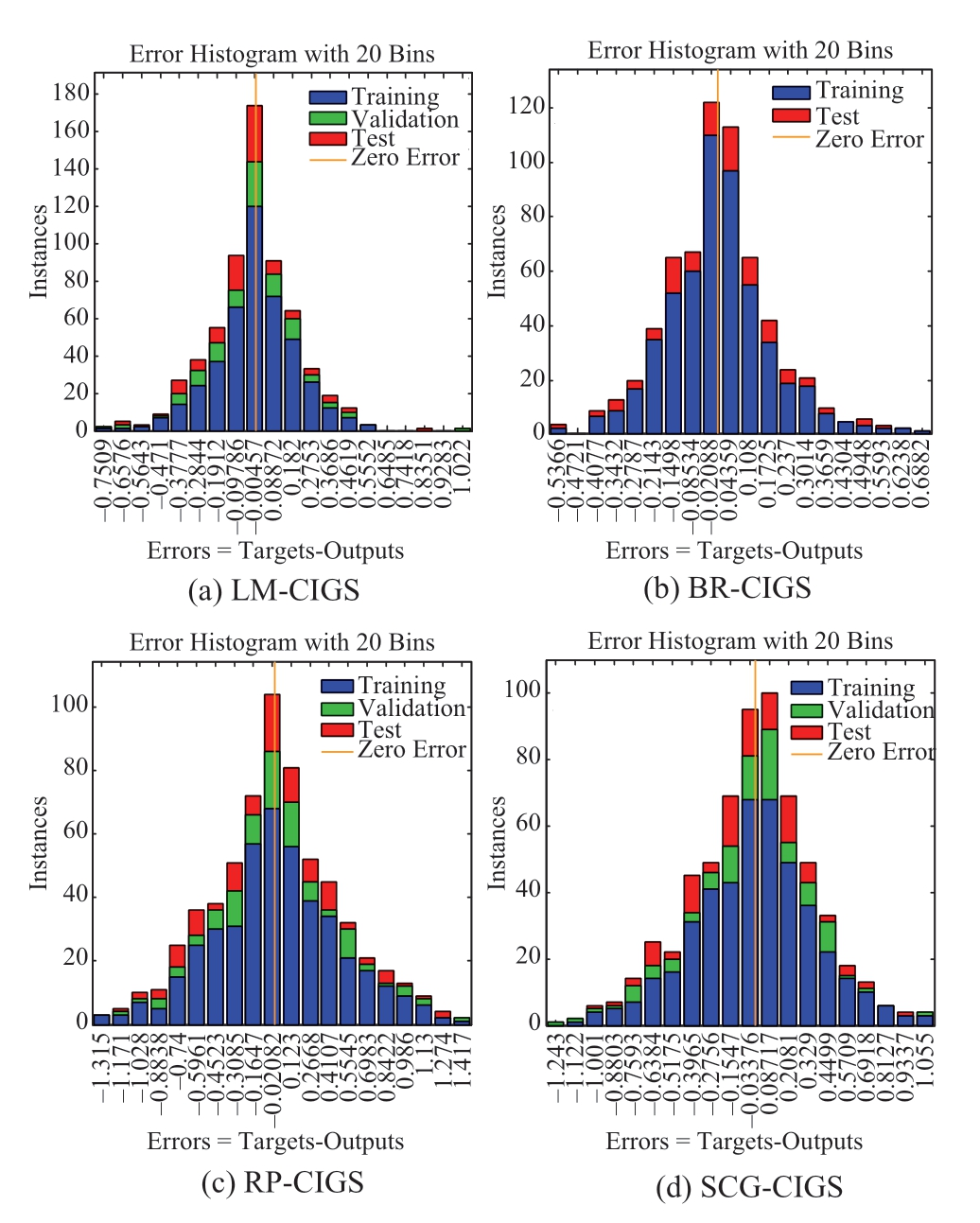
Fig.13 Error histogram of 20 Bins for CIGS PV module
4 Conclusion
In this study, the prediction model based on LM, BR,RP, and SCG ANN algorithms is presented.The four algorithms were compared to understand their ability in the prediction of the power output of a-Si and CIGS PV modules here, power output is chosen as the target and five parameters; solar irradiance, ambient temperature, module temperature, relative humidity, and wind speed, are inputs to training the algorithms.Predicted power outputs for both PV modules agreed with actual power output values.In comparison, the BR algorithm performed much better as it produced minimum MSE, RMSE, MABE, MAPE and higher R2 values for both a-Si and CIGS PV modules compared to the other three algorithms under consideration.
Acknowledgements
The authors extend their appreciation to the University of Dodoma for supporting this work.
Declaration of Competing Interest
The authors declare that they have no known competing financial interests or personal relationships that could have influenced the work reported in this paper.
References
[1] Parida B, Iniyan S, Goic R (2011) A review of solar photovoltaic technologies.Renewable and sustainable energy reviews.15(3):1625-36.doi.org/10.1016/j.rser.2010.11.032
[2] Charfi W, Chaabane M, Mhiri H, et al.(2018) Performance evaluation of a solar photovoltaic system.Energy Reports 4:400-4006
[3] Kidegho G, Njoka F, Muriithi C, et al. (2021) Evaluation of thermal interface materials in mediating PV cell temperature mismatch in PV-TEG power generation.Energy Reports 7:1636-1650.doi.org/10.1016/j.egyr.2021.03.015
[4] Meflah A, Rahmoun K, Mahrane A, et al.(2017) Outdoor performance modeling of three different silicon photovoltaic module technologies.International Journal of Energy and Environmental Engineering 8(2): 143-152.doi.org/10.1007/s40095-017-0228-6
[5] Mesquita DD, Silva JL, Moreira HS, et al.(2019) A review and analysis of technologies applied in PV modules.2019 IEEE PES Conference on Innovative Smart Grid Technologies, ISGT Latin America 2019, December.doi.org/10.1109/ISGT-LA.2019.8895369
[6] Trancossi M (2011) Testing Performance, Weathering and Aging of Photovoltaic Modules.ASME 2011 5th International Conference on Energy Sustainability, Parts A, B, and C.doi.org/10.1115/ES2011-54625
[7] Zaoui F, Titaouine A, Becherif M, et al.(2015) A Combined Experimental and Simulation Study on the Effects of Irradiance and Temperature on Photovoltaic Modules.Energy Procedia,75:373-380.doi.org/10.1016/j.egypro.2015.07.393
[8] Sadok M, Mehdaoui A (2008) Outdoor testing of photovoltaic arrays in the Saharan region.Renewable Energy.doi.org/10.1016/j.renene.2008.02.016
[9] Mathew M, Kumar NM, Koroth RP (2018) Outdoor measurement of mono and poly c-Si PV modules and array characteristics under varying load in hot-humid tropical climate.Materials Today: Proceedings, 5(2):3456-3464.doi.org/10.1016/j.matpr.2017.11.592
[10] Zaghba L, Khennane M, Fezzani A, et al.(2019) Experimental outdoor performance evaluation of photovoltaic plant in a Sahara environment (Algerian desert).International Journal of Ambient Energy.doi.org/10.1080/01430750.2019.1636865
[11] Islam MN, Rahman M Z, Mominuzzaman SM (2014)The effect of Irradiation on different parameters of monocrystalline photovoltaic solar cell.Proceedings of 2014 3rd International Conference on the Developments in Renewable Energy Technology, ICDRET 2014.doi.org/10.1109/icdret.2014.6861716
[12] Jed ME, Ihaddadene R, Ihaddadene N, et al.(2020) Performance analysis of 954, 809 kWp PV array of Sheikh Zayed solar power plant (Nouakchott, Mauritania).Renewable Energy Focus 32:45-54.doi.org/10.1016/j.ref.2019.11.002
[13] Hamou S, Zine S, Abdellah R (2014) Efficiency of PV module under real working conditions.Energy Procedia50: 553-558.doi.org/10.1016/j.egypro.2014.06.067
[14] Mellit A, Pavan AM (2010) A 24-h forecast of solar irradiance using artificial neural network: Application for performance prediction of a grid-connected PV plant at Trieste, Italy.Solar Energy 84(5): 807-821.doi.org/10.1016/j.solener.2010.02.006
[15] Antonanzas J, Osorio N, Escobar R, et al.(2016) Review of photovoltaic power forecasting.In Solar Energy 136: 78-111.doi.org/10.1016/j.solener.2016.06.069
[16] Ulbricht R, Fischer U, Lehner W, et al.(2013) First Steps towards a Systematical Optimized Strategy for Solar Energy Supply Forecasting
[17] De Giorgi MG, Congedo PM, Malvoni M (2014) Photovoltaic power forecasting using statistical methods: Impact of weather data.IET Science, Measurement and Technology 8(3): 90-97.doi.org/10.1049/iet-smt.2013.0135
[18] Singh VP, Vaibhav K, Chaturvedi DK (2012) Solar power forecasting modeling using soft computing approach.3rd Nirma University International Conference on Engineering, NUiCONE 2012.doi.org/10.1109/NUICONE.2012.6493268
[19] Wang S, Zhang Y, Zhang C, et al.(2020) Improved artificial neural network method for predicting photovoltaic output performance.Global Energy Interconnection 3(6): 553-561.doi.org/10.1016/j.gloei.2021.01.005
[20] Elamim A, Hartiti B, Haibaoui A, et al.(2020) Generation of Photovoltaic Output Power Forecast Using Artificial Neural Networks.Lecture Notes in Electrical Engineering, 624 LNEE 127-134.doi.org/10.1007/978-3-030-36475-5_12
[21] Garud KS, Jayaraj S, Lee MY (2021) A review on modeling of solar photovoltaic systems using artificial neural networks, fuzzy logic, genetic algorithm and hybrid models.In International Journal of Energy Research 45(1): 6-35.John Wiley and Sons Ltd.doi.org/10.1002/er.5608
[22] Pan X, Lee B, Zhang CA (2013) comparison of neural network backpropagation algorithms for electricity load forecasting.In2013 IEEE International Workshop on Intelligent Energy Systems (IWIES) 22-27 Nov 2013
[23] Zhu J, Xiao Z, Feng CHA (2021) Prediction of photovoltaic power generation based on Bayesian neural network with grey correlation.In Journal of Physics: Conference Series 2005(1)012069
[24] Younis O (2018) A predictive model for solar photovoltaic power using the Levenberg-Marquardt and Bayesian regularization algorithms and real-time weather data.International Journal of Advanced Computer Science and Applications9(1)
[25] Louzazni M, Mosalam H, Cotfas DT, et al.(2021) Forecasting of photovoltaic power by means of non-linear auto-regressive exogenous artificial neural network and time series analysis.Electronics, 10(16): 1953
[26] Awan SM, Khan ZA, Aslam M (2018) Solar generation forecasting by recurrent neural networks optimized by levenbergmarquardt algorithm.InIECON 2018-44th Annual Conference of the IEEE Industrial Electronics Society 276-281 Oct 2018
[27] Zhang N, Behera PK (2012) Solar radiation prediction based on recurrent neural networks trained by Levenberg-Marquardt backpropagation learning algorithm.In 2012 IEEE PES Innovative Smart Grid Technologies (ISGT),1-7 Jan 2012.doi.10.1109/IECON.2018.8591799
[28] Kusuma V, Privadi A, Budi AL (2021) Photovoltaic Power Forecasting Using Recurrent Neural Network Based on Bayesian Regularization Algorithm.In2021 IEEE International Conference in Power Engineering Application (ICPEA), 109-114, Mar 2021
[29] Mittal M, Bora B, Saxena S, et al.(2018) Performance prediction of PV module using electrical equivalent model and artificial neural network.Solar Energy, 176:104-17
[30] Tiwari S, Naresh R, Jha R (2013) Comparative study of backpropagation algorithms in neural network based identification of power system.International Journal of Computer Science &Information Technology.5(4):93
[31] Boubaker S, Kamel S, Kchaou M (2020) Prediction of Daily Global Solar Radiation using Resilient-propagation Artificial Neural Network and Historical Data: A Case Study of Hail, Saudi Arabia.Engineering, Technology & Applied Science Research 10(1):5228-32
[32] Askarzadeh A (2014) Voltage prediction of a photovoltaic module using artificial neural networks.International transactions on electrical energy systems.24(12): 1715-25.doi.org/10.1002/etep.1799
[33] Chen C, Duan S, Cai T, et al.(2011) Online 24-h solar power forecasting based on weather type classification using artificial neural network.Solar energy 85(11): 2856-70
[34] Wang F, Mi Z, Su S, et al.(2012) Short-term solar irradiance forecasting model based on artificial neural network using statistical feature parameters.Energies 5(5): 1355-70
[35] Skoplaki E, Palyvos, JA (2009) Operating temperature of photovoltaic modules: A survey of pertinent correlations.Renewable Energy 34(1): 23-29.doi.org/10.1016/j.renene.2008.04.009
[36] Boubaker S, Kamel S, Kchaou M (2020) Prediction of Daily Global Solar Radiation using Resilient-propagation Artificial Neural Network and Historical Data: A Case Study of Hail, Saudi Arabia.Engineering, Technology & Applied Science Research 10(1):5228-32
[37] Al-Dahidi S, Ayadi O, Adeeb J, et al.(2019) Assessment of Artificial Neural Networks Learning Algorithms and Training Datasets for Solar Photovoltaic Power Production Prediction.Frontiers in Energy Research 7: 130.doi.org/10.3389/fenrg.2019.00130
Received: September 18 2021/ Accepted: November 30 2021/ Published:April 25 2022
Adriano Pamain
adrianopamain85@gmail.com
P.V.Kanaka Rao
pvkrao76@gmail.com
Frank Nicodem Tilya
ftilya@gmail.com
2096-5117/© 2022 Global Energy Interconnection Development and Cooperation Organization.Production and hosting by Elsevier B.V.on behalf of KeAi Communications Co., Ltd.This is an open access article under the CC BY-NC-ND license (http: //creativecommons.org/licenses/by-nc-nd/4.0/ ).
Biographies

Adriano Pamain received Bachelor of Science with Education at University of Dar es Salaam, 2010 and Masters in Material Science and Engineering at Nelson Mandela African Institution of Science and Technology,2014 with research on Dye sensitized solar cells (DSSC).Currently he is doing PhD at University of Dodoma with research based on Photovoltaic (PV) technologies.He is also an academic staff in Physics department at University of Dodoma.His further reseach interest includes renewable energy modelling, PV Power Electronics,Solar generation analysis and prediction, New module architectures,module components, and innovative cell designs, Data analytics for prediction of solar generation and PV system performance.

P.V.Kanaka Rao received Masters in mathematics from MK University, Masters in technological physics, 2001 and PhD in Physics at JNTU University, India, in 2008.He is working as professor of physics at University of Dodoma, Tanzania.He is also a member Institute of Science and Technology,India, Fellow Optical Society of India.His research areas theoretical and computational Physics, electronics and optics.

Frank Nicodem Tilya received the B.S.and M.S.degrees in electronic engineering from university of Dar es salaam, Tanzania and Carleton University, Ottawa Canada, in 1985 and 1993, respectively, and the Ph.D.degree in Physics Education from Twente University,Netherlands, in 2003.He is currently senior lecturer with the College of Natural and Mathematical Sciences, Physics Department.His current major research interests include energy storage optimization scheduling and the power market.
(Editor Yanbo Wang)
